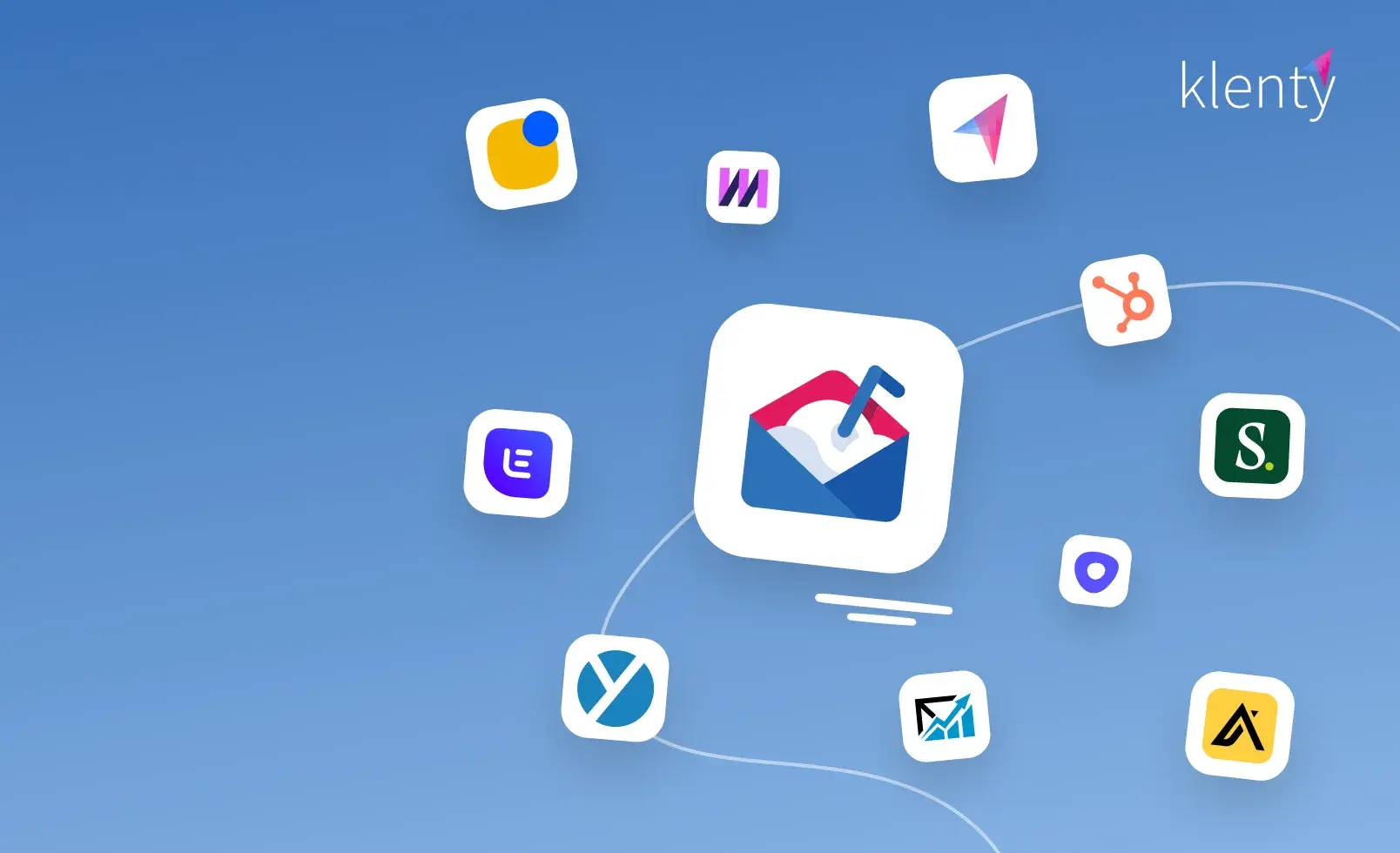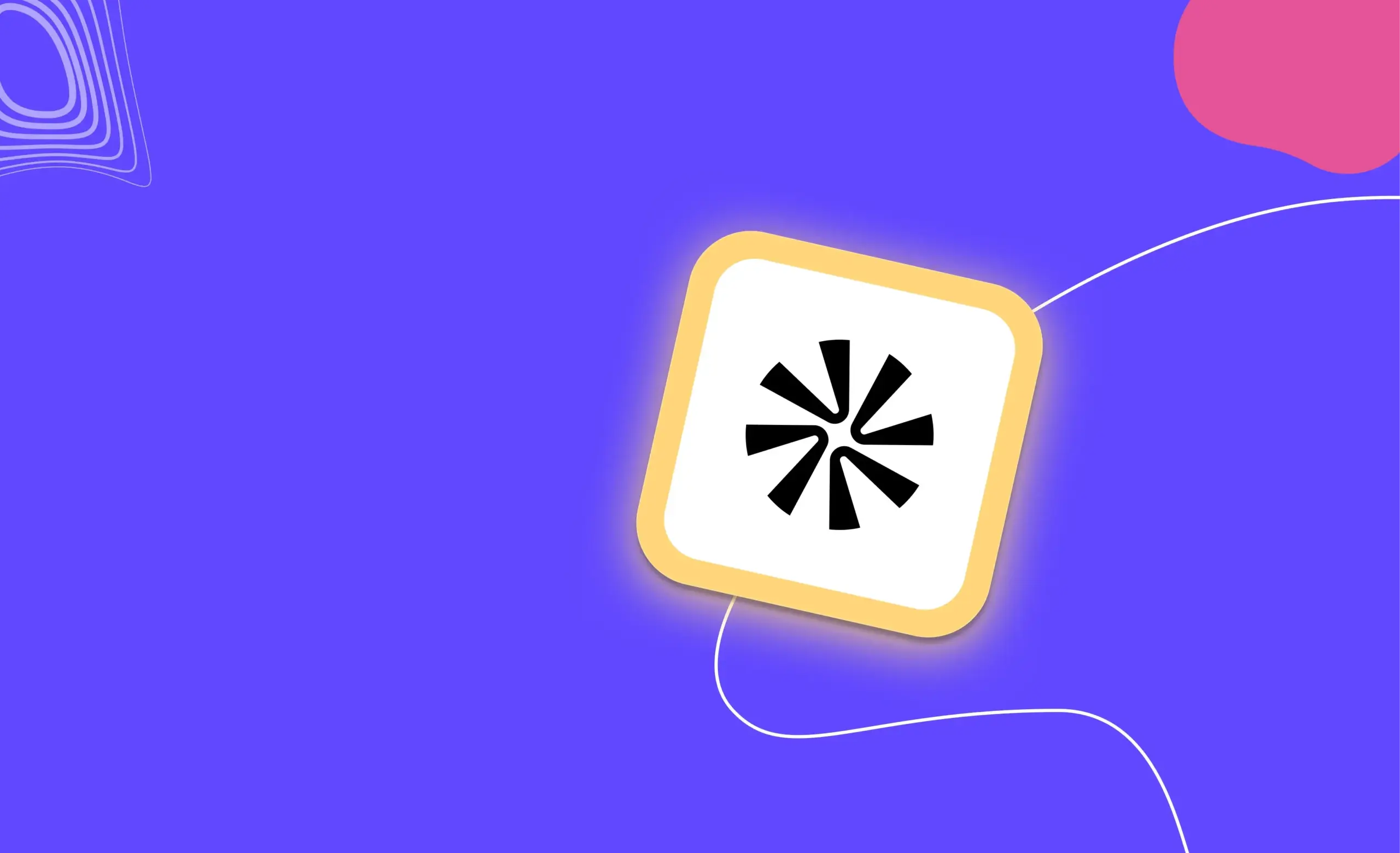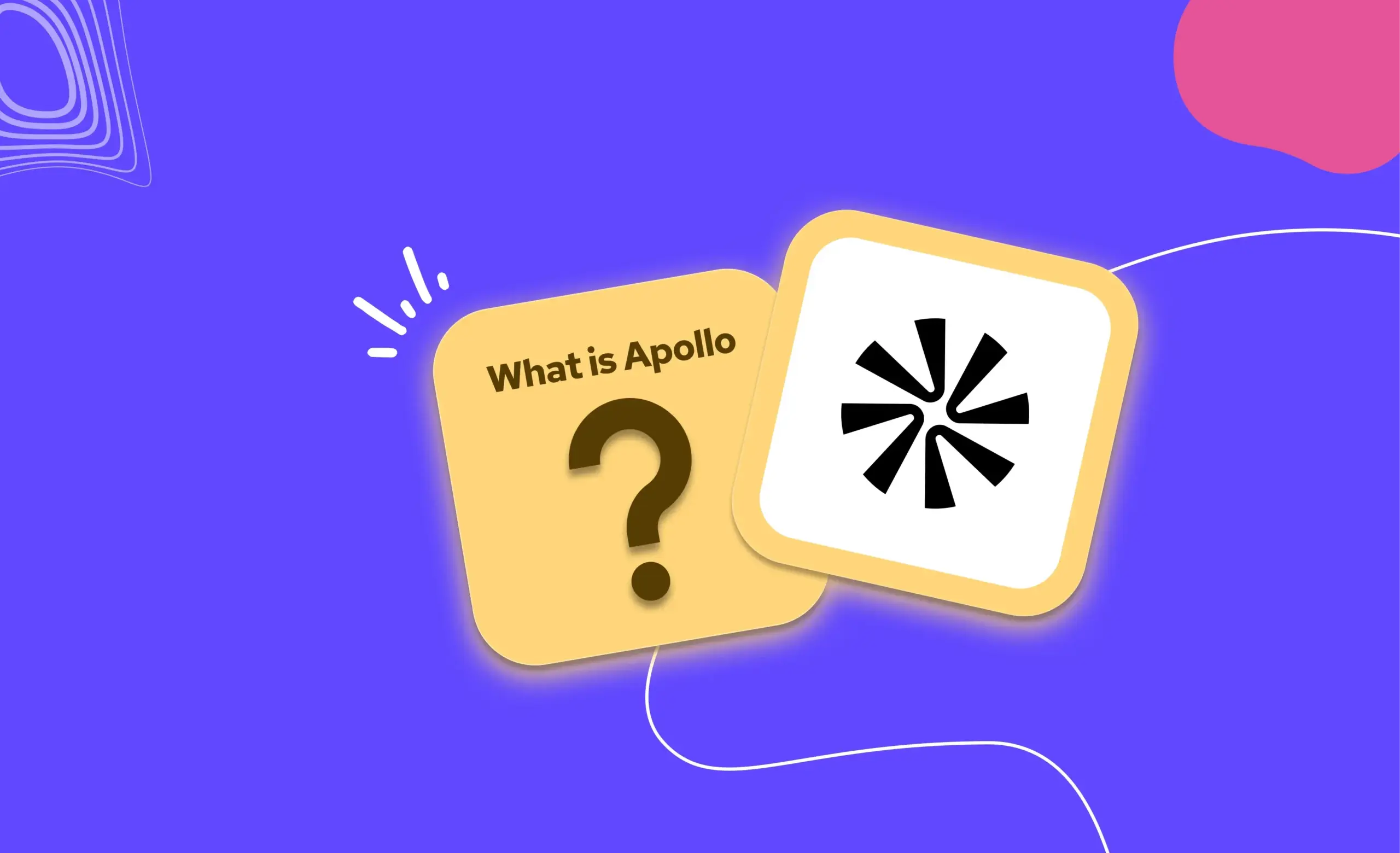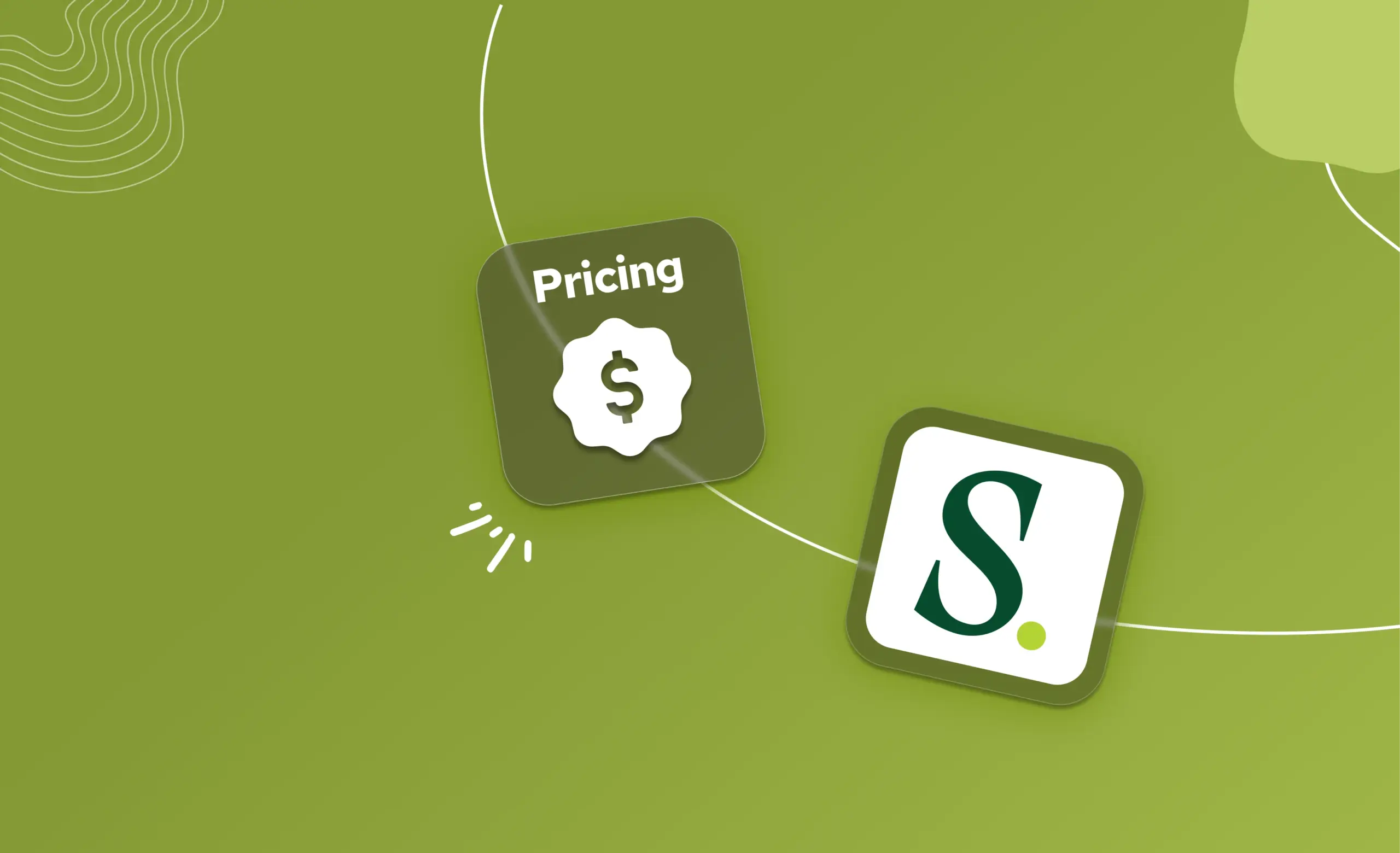Are you looking for alternatives to Mailshake?
There are plenty of other sales engagement platforms that you can consider as alternatives to Mailshake. But, researching all of them individually is going to be cumbersome.
Worry not.
Here, we’re going to give you the best 10 Mailshake alternatives that you need to evaluate before zeroing in on the right tool for your sales team.
What Is Mailshake?
Mailshake is a sales automation platform that helps you automate outreach at scale and get more replies for prospects.
Mailshake puts your lead generation on autopilot by helping you connect with thousands of prospects all at once with personalized messages—through email, social and phone.
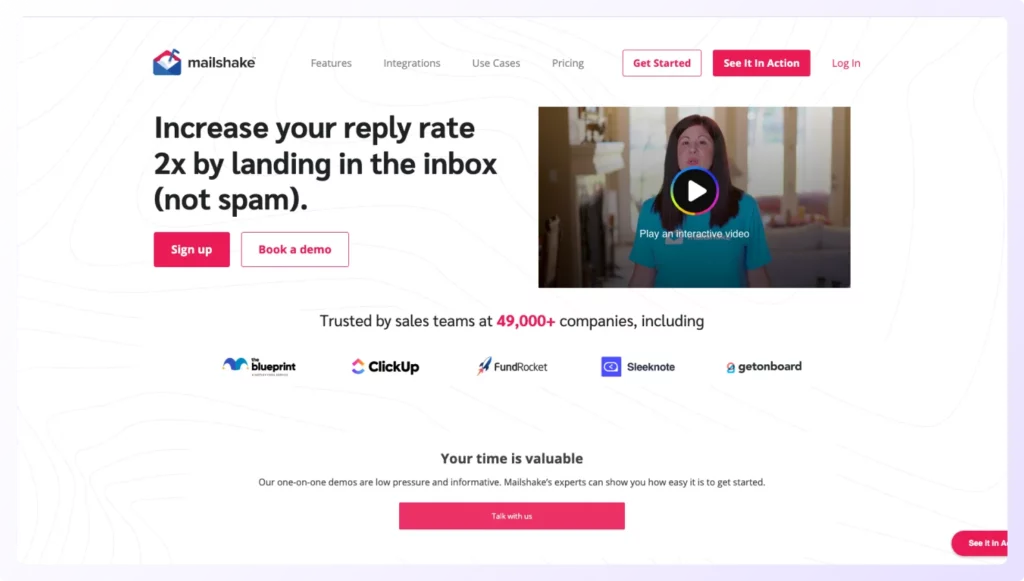
Pros & Cons of Mailshake
Let’s shed some light on what’s great and not-so-great about Mailshake.
Pros of Mailshake:
- Strong email deliverability. Mailshake warms up your email domain to improve your sender score and pauses email sequences when a prospect replies, unsubscribes, or bounces.
- AI assistance to write and analyze emails. SDRs can write dozens of email copies and subject lines in a matter of minutes that will get more opens and replies.
- Ability to catch leads who turn hot. The Lead Catcher feature ensures reps don’t miss any leads, and reach out to them the moment they turn hot.
- Unlimited free calling minutes. With unlimited free dialer minutes for North American phone numbers, you can grow your cold call outreach without any constraints.
- Prospects view. Get a bird’s eye view of a prospect and see every email, social message, and phone call they've received across multiple campaigns.
Cons of Mailshake:
- No powerful dialing capabilities. Mailshake doesn’t allow sales reps to dial more than one number at a time.
- Lack of behavior-based playbooks. Mailshake can’t customize your outreach and follow-up efforts based on the prospect’s intent and behavior.
- Lack of goal-driven outreach capabilities. With Mailshake, you can’t set predefined outreach goals for reps.
- Basic CRM integrations. Advanced capabilities like syncing conversation history with prospects and tasks to the CRM are not found.
- Basic email personalization capabilities. Mailshake doesn’t provide advanced email capabilities like changing the email content based on when the prospect’s interaction.
- Lack of free trials. Mailshake does not provide any free trials.
Mailshake Pricing
- Email Outreach plan: $58 per user per month (billed annually).
- Sales Engagement plan: $83 per user per month (billed annually).
What To Look For in a Mailshake Alternative?
To recap, Mailshake falls short when it comes to calling, email personalization, and CRM integration capabilities. On top of these, there are no free trials, and the tool doesn’t allow sales teams to have a goal-driven or an intent-driven approach to sales outreach.
So, when you’re evaluating alternatives, check the following points:
- Availability of free trial
- Advanced calling capabilities
- Strong email personalization capabilities
- Integrates with popular CRMs
- Enables a goal-driven outreach
- Allows customized outreach based on prospect’s intent
Now, let’s dive into the alternatives for Mailshake so you can see for yourself which tool ticks all the above boxes.
Mailshake Alternative #1: Klenty
Klenty is a sales engagement platform that helps mature sales teams engage prospects strategically across multiple channels, execute the right next step for every prospect and generate qualified pipeline.
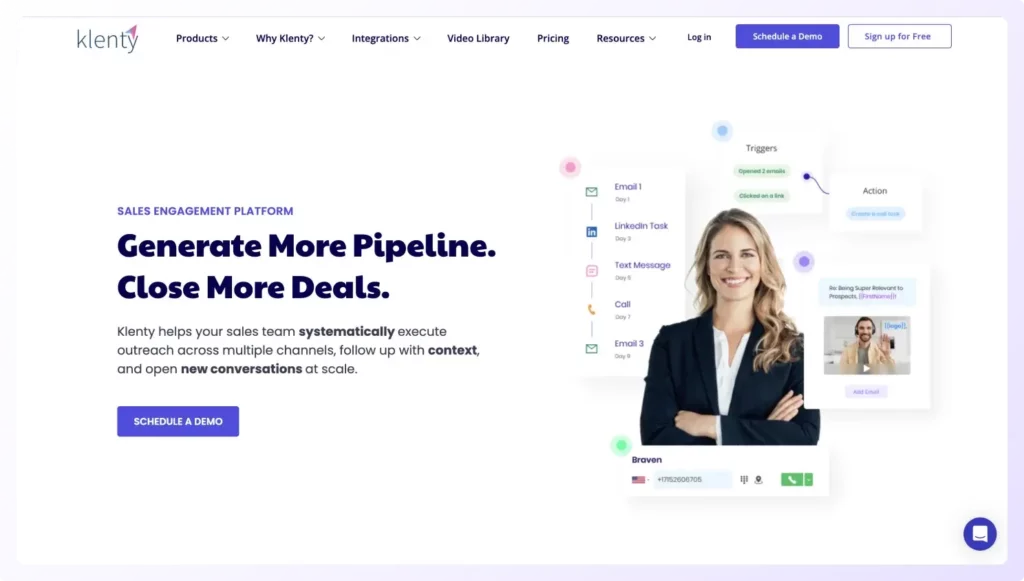
Klenty helps sales teams automate and standardize every single touchpoint—from cold prospect to opportunity to closed-won—to help you build a repeatable sales process.
Why Is Klenty Best for Email-Heavy Teams?
For sales teams relying on email outreach and running multiple cold email campaigns, Klenty offers advanced email personalization and ensures high email deliverability to ensure all your emails land on the prospect’s primary inbox and your campaigns see high open and response rates.
Here’s a look at how Klenty helps email-heavy sales teams meet their outreach goals:
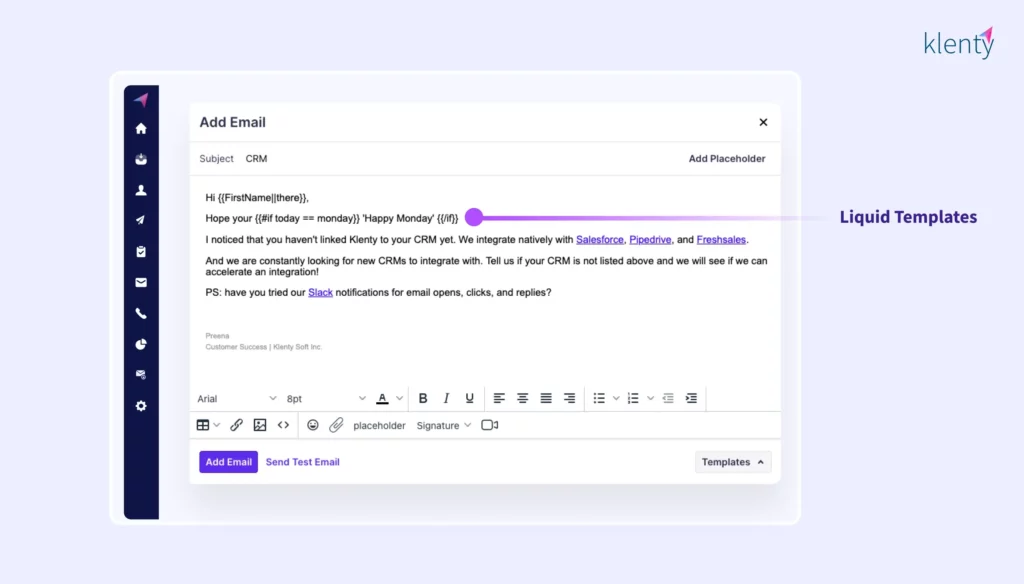
Email Personalization:
- Merge Fields lets you add custom phrases, sentences and even paragraphs based on prospect type.
- Liquid Templates uses dynamic formulas to change the content of your emails based on when the prospect receives and opens the email.
- Kai, Klenty’s AI Cadence Writer, scans the prospect’s website and LinkedIn profile and picks out ‘personalization points’ for your emails. It also inserts hyper-personalized openers, ‘problem sentences’ and CTAs to your emails.
Email Deliverability:
- Email validation helps reduce bounce rates by automatically validating email addresses for both new and existing prospects.
- Email sending control—Klenty lets you limit the number of emails you send per day and stagger email sending in an irregular manner.
- Deliverability insights give you the percentage of emails that land in the Primary Tab across different email service providers, scores your emails based on spam factors, and gives suggestions for improving deliverability.
Why Is Klenty Best for Call-Heavy Teams?
Klenty’s calling features allows you to dial prospects in bulk and automatically syncs all activities, notes, and tasks to your CRM. This makes it ideal for sales teams engaging in high-volume cold calling for their sales outreach.
Here’s a deeper look at the capabilities of Klenty’s Sales Dialer:
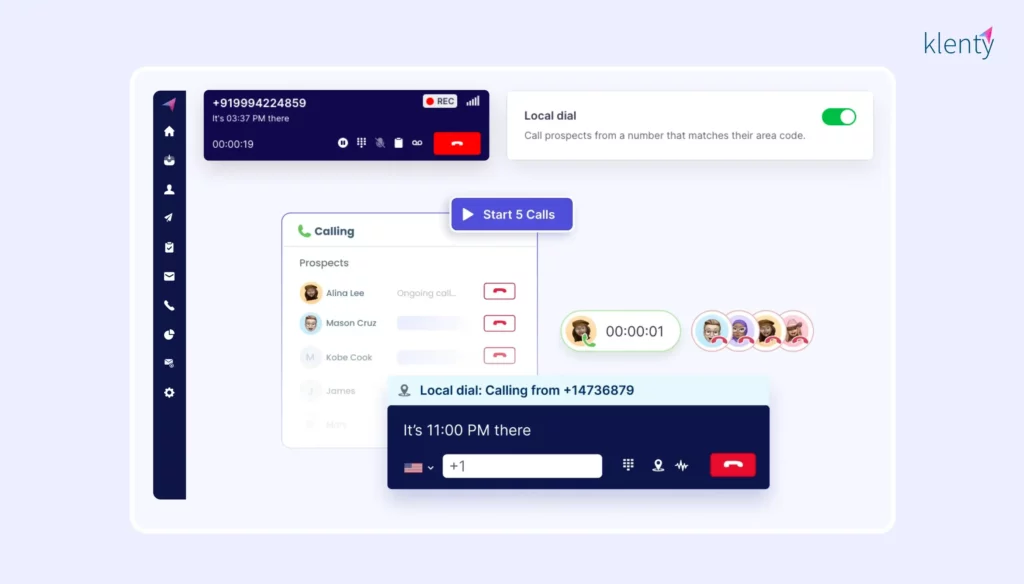
- Parallel dialing. The dialer enables reps to place up to 5 calls simultaneously in one click, enabling you to scale your outbound call volume 5x and boost call productivity by minimizing time spent on unproductive calls.
- AI-powered call notes. Klenty’s conversation intelligence automatically generates highly detailed call notes of your calls. Also, all notes get synced to your CRM instantly.
- Time zone detection lets you batch prospects based on their respective time zones and call them during prime business hours.
- 1-click-to-call dialer helps you dial without any manual effort.
- Voicemail drop lets you send personalized, pre-recorded voicemails with 1 click.
- Local dial to place calls to your prospects using their area code.
- Call reports to measure your performance and find coachable points.
Why Is Klenty Best for Intent-Driven Outreach?
Klenty lets you segment prospects and run the right next steps for them based on their intent. Through this customized outreach and follow-up efforts based on the prospect’s buying journey, you can execute the right activities at the right time for every prospect.
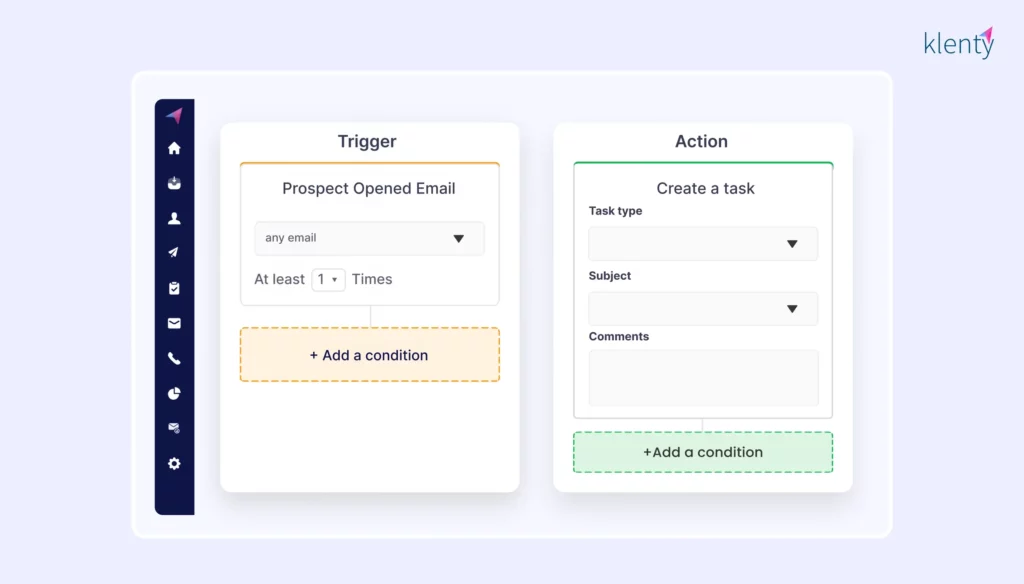
- High Intent Detector allows you to assign points and isolate those prospects who are closer to buying than others.
- Cadence Playbooks helps you customize your outreach based on their intent. You can automatically move prospects to a different cadence based on intent, and execute precisely those activities which take each prospect towards a meeting.
Why Is Klenty Best for Goal-Driven Outreach?
With Klenty's Goals and Reports, sales leaders can set up milestones for sales reps to hit on a weekly and monthly basis. This means reps stay accountable to targets and adapt their approach to hit goals.
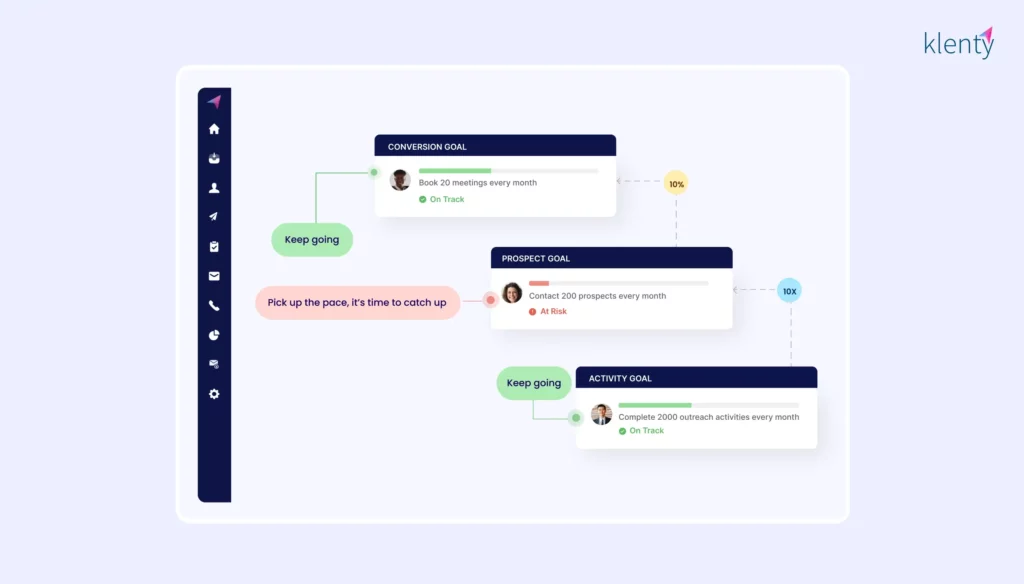
For every rep in their team, managers can track KPIs like:
- activity targets,
- prospect coverage targets, and
- conversion targets.
They also get full visibility into rep efforts across emails, calls, LinkedIn tasks, text, and WhatsApp.
What’s more, managers can spot gaps and coach reps to help them to achieve their targets.
How Does Klenty’s Multichannel Outreach Works?
Klenty empowers sales reps to make complete use of 5 different channels:
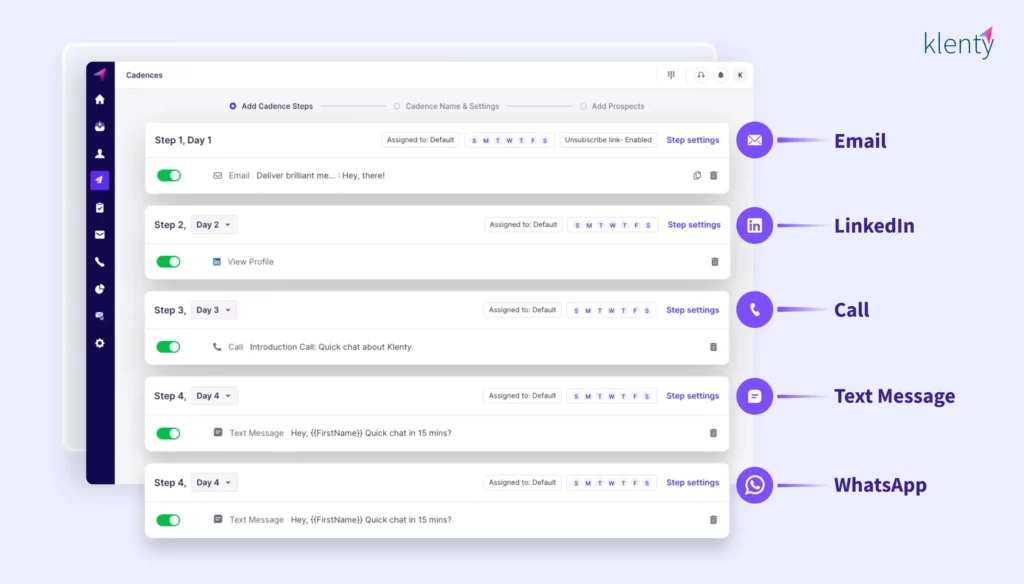
- Phone: Place calls and voicemails in one click without the distraction of dialing.
- Email: Personalize email text and videos with prospect data at scale.
- LinkedIn: Complete tasks like InMails and connect requests in a click with personalization.
- SMS: Use text messaging to complement your cold calls and boost your chances of striking a conversation.
- WhatsApp: Schedule and send personalized WhatsApp messages in one click.
Through a full-fledged and automated multichannel outreach, reps can reach prospects wherever they are, and book more meetings—all at scale.
Plus, Klenty’s multi-channel inbox collates all prospect communication across all channels in one place, so you can manage prospect interactions without the pain of switching tabs.
Klenty Pricing
Here are the pricing details for the different plans that Klenty offers
- Startup plan: $50/user/month (billed annually) and $60/user/month (billed quarterly).
- Growth plan: $70/user/month (billed annually) and $85/user/month (billed quarterly).
- Pro plan: $100/user/month (billed annually) and $125/user/month (billed quarterly).
- Enterprise plan: Customized plans available.
Mailshake Alternative #2: Yesware
Yesware is an email outreach automation platform that helps you increase sales productivity by automating your outreach at scale. Its Outlook and Gmail add-on tracks your activity, and easily integrates with the tools you already use.
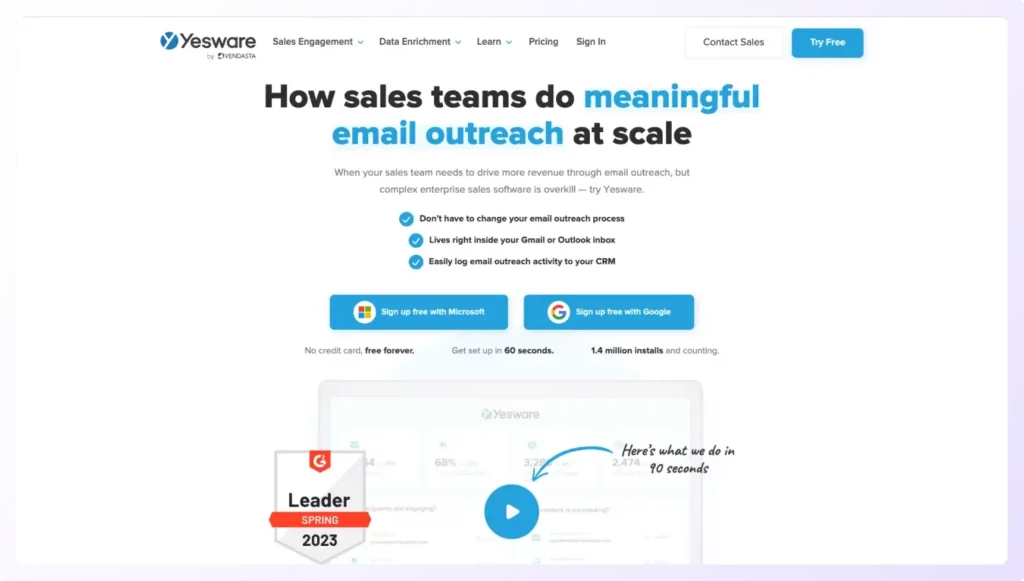
Apart from email outreach, the platform also enables you to connect with more buyers through its lead sourcing capabilities, and track results accurately by providing data-driven insights.
Pros of Yesware
- Strong email automation capabilities. Its email templates cover ready-to-go messaging for the entire sales cycle and each template is highly customizable, allowing you to personalize all your email touches.
- Seamless Salesforce integration. Yesware automatically syncs your email activity, calendar activity, campaign activity and engagement data with Salesforce CRM.
- Salesforce Sidebar. This feature puts your prospect’s recent activity from the Salesforce CRM right in your inbox so that you can make your email outreach highly relevant.
- Rep activity reports. The ‘My Dashboard’ lets reps review their daily/weekly email performance that presents metrics like opens, replies, meetings booked, which provides insights on how prospects engage with their cold emails.
- Email engagement reports. This shows which prospect has opened the most emails, clicked links and viewed attachments so that you can follow up with messages that grab their attention.
- Team reports. To know what’s working for your sales team, the Campaign and Template Reports show the open, reply and connect rates for all shared content to help you find the most highest-converting campaigns and templates.
Cons of Yesware
- Not suitable for mature sales processes. Yesware is an add-on to existing email providers and isn’t a full-fledged and comprehensive sales engagement software.
- Lacks true multi-channel capabilities. While Yesware can create multichannel campaigns, the platform lacks capabilities like built-in dialer for phone calls, LinkedIn outreach automation and text messaging.
- Can’t segment prospects based on intent. Yesware lacks the ability to segment prospects and customize your outreach based on their intent.
- No real-time accountability for reps. The dashboard shows only the daily and weekly performances and lacks any mechanism to track rep activity in real time.
- Lacks deep personalization capabilities. Yesware’s email templates don't offer advanced email personalization features like changing the email content based on when the prospect receives and opens the email.
- Integrates with only one CRM. Apart from Salesforce, Yesware doesn’t integrate with other CRMs. So, its applicability is limited for sales teams who don’t use Salesforce.
Yesware Pricing
- Free Forever: $0/seat/month.
- Pro plan: $19/seat/month (billed monthly) $15/seat/month (billed annually).
- Premium plan: $45/seat/month (billed monthly) and $35/seat/month (billed annually).
- Enterprise plan: $85/seat/month (billed monthly) and $65/seat/month (billed annually).
- Custom Plan: Customized pricing.
Learn more about the features and capabilities of Yesware here.
Mailshake Alternative #3: Quickmail
Quickmail is an email automation platform that helps reps to automate their follow-ups, scale their email outreach, and boost email deliverability.
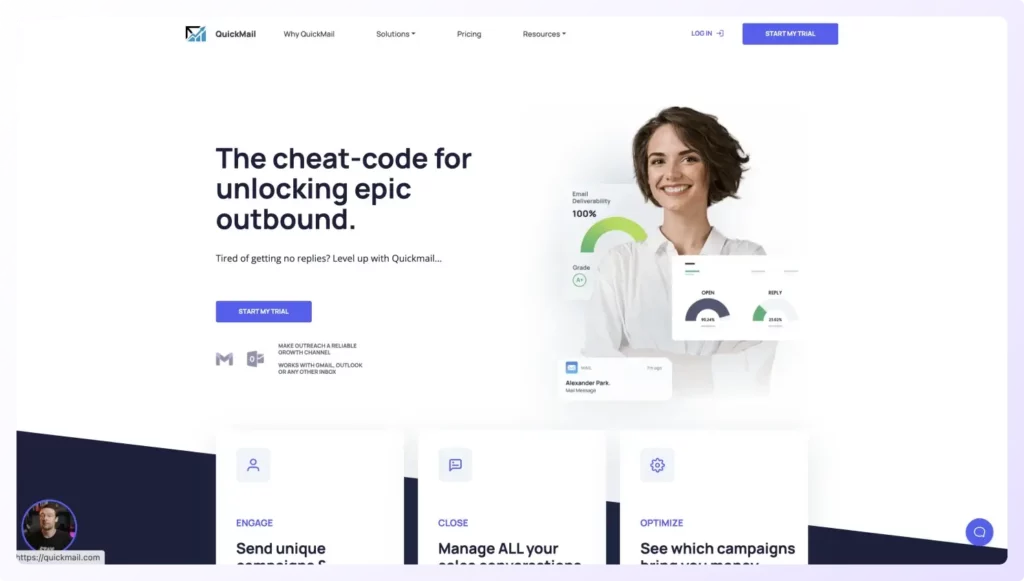
Founded in 2014, the platform also enables sales teams to run multichannel outreach campaigns, as reps can use emails, phone calls, SMS, and Slack to reach prospects.
Pros of Quickmail
- Best suited for bulk email outreach. You can send up to 300,000 emails per month with Quickmail, making it an ideal platform for email-heavy teams engaging in bulk cold email outreach.
- Strong deliverability at scale. The platform comes with free email warmup integration, blacklist monitoring, Google-approved sending API that mimics a human cadence, and real-time deliverability scores for every inbox, even for bulk email campaigns.
- Supports a wide range of email providers. Quickmail supports Gmail, Microsoft Outlook, Amazon SES, PostMark, MailJet, MailGun, Zoho Email and any other email account using Simple Mail Transfer Protocol (SMTP) and Internet Message Access Protocol (IMAP).
- No upper limit on number of users. With QuickMail, teams can add as many users to their account as needed at no extra cost.
- Low downtime. Quickmail boasts a 99.99% uptime, making it a reliable platform as it isn’t prone to frequent outages and doesn’t impede pre-planned activities.
- Strong automation capabilities. Quickmail lets teams automate activities like importing prospects, scheduling email campaigns, and sending automated follow-ups.
Cons of Quickmail
- Not suitable for mature sales processes. Quickmail isn’t a comprehensive sales engagement software suited for sales teams who deal with complex buying journeys of prospects.
- Basic multichannel capabilities. Quickmail’s email-centricity prevents sales reps from leveraging the full potential of other outreach channels using the same platform.
- Limited CRM integration. Quickmail provides bidirectional integrations with 2 CRMs—Pipedrive and HubSpot—and not with other CRMs popular in the market.
- Lack of goal-driven outreach capabilities. Quickmail can’t allow sales teams to set and track specific outbound goals every day (like contacting X prospects every day) to make every rep in the team accountable to achieve their overall targets.
- No in-built prospect data curation. Within its platform, Quickmail doesn’t enable sales teams to source accurate email and phone data for your ideal buyers.
- No powerful dialing capabilities. Quickmail doesn’t allow sales reps to dial more than one number at a time.
Quickmail Pricing
- Basic Plan: $49 per month.
- Pro Plan: $89 per month.
- Expert plan: $129 per month.
Learn more about the features and capabilities of Quickmail here.
Mailshake Alternative #4: Mixmax
Mixmax is a sales engagement platform that helps organizations build more pipeline by automating repetitive tasks and streamlining workflows of sales and customer success teams.
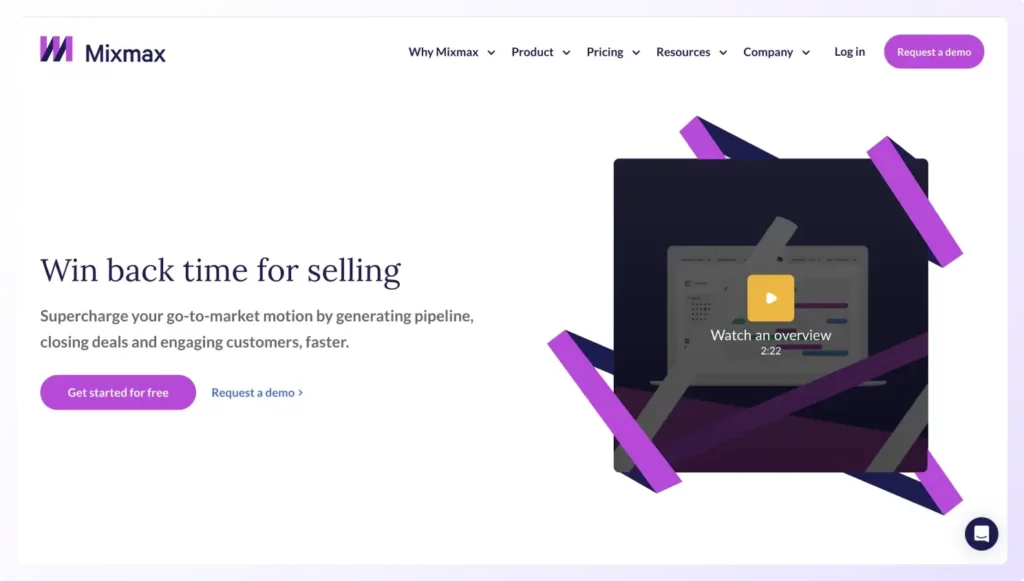
Pros of Mixmax
- Insights on prospect activity. Mixmax lets sales reps track opens, clicks, bounces, replies, downloads, and RSVPs across all templates, sequences, and prospects.
- Strong automation capabilities. Some of Mixmax’s automation capabilities include automatically triggering email templates or sequences based on prospect activity, real-time addition of high-priority items to rep’s tasks, and automated Salesforce CRM updates on leads/opportunities/accounts.
- Security for all plans. Mixmax provides SOC 2 Type II security to ensure data security for all of its 5 plans, from its Free Plan to Enterprise.
- Deep integration with Salesforce. Reps who use Salesforce CRM can automatically update their CRM records from within their email inbox, personalize messages using Salesforce dynamic fields, and create rule-driven workflows.
- Call analysis with Gong integration. Mixmax integrates with Gong to analyze customer conversations across phone, email, and web conferencing.
Cons of Mixmax
- Not suitable for mature sales processes. Mixmax is a Chrome extension and not a full-fledged sales engagement software, making it less-than-ideal to scale your sales activities and build repeatable processes.
- Limited CRM integration. Mixmax integrates well with Salesforce, but does not provide deep and bidirectional integrations with other CRMs popular in the market.
- Restricted email provider support. Apart from Gmail, Mixmax doesn’t support other popular email providers like Microsoft Outlook.
- Lack of goal-driven outreach capabilities. Mixmax can’t allow sales teams to set and track specific outbound goals every day (like contacting X prospects every day) to make every rep in the team accountable to achieve their overall targets.
- No in-built prospect data curation. Within its platform, Mixmax doesn’t enable sales teams to source accurate email and phone data for your ideal buyers.
- No parallel dialer. Mixmax’s dialer doesn’t let sales reps dial more than one number at a time.
- Lack of behavior-based playbooks. Mixmax doesn’t possess playbooks that customize outreach and follow-up efforts based on the prospect’s intent and behavior.
Mixmax Pricing
- Free Plan: $0
- SMB Plan: $34 per seat per month (monthly billing) and $29 per seat per month (annual billing).
- Growth Plan: $65 per seat per month (monthly billing) and $49 per seat per month (annual billing).
- Growth+Salesforce Plan: $69 per seat per month (annual billing only).
- Enterprise Plan: Customized plans available.
Learn more about the features and capabilities of Mixmax here.
Mailshake Alternative #5: Reply.io
Reply.io is a sales engagement platform that helps sales teams reach out to prospects across 5 different channels—email, phone, LinkedIn, SMS, and WhatsApp—and book more meetings.
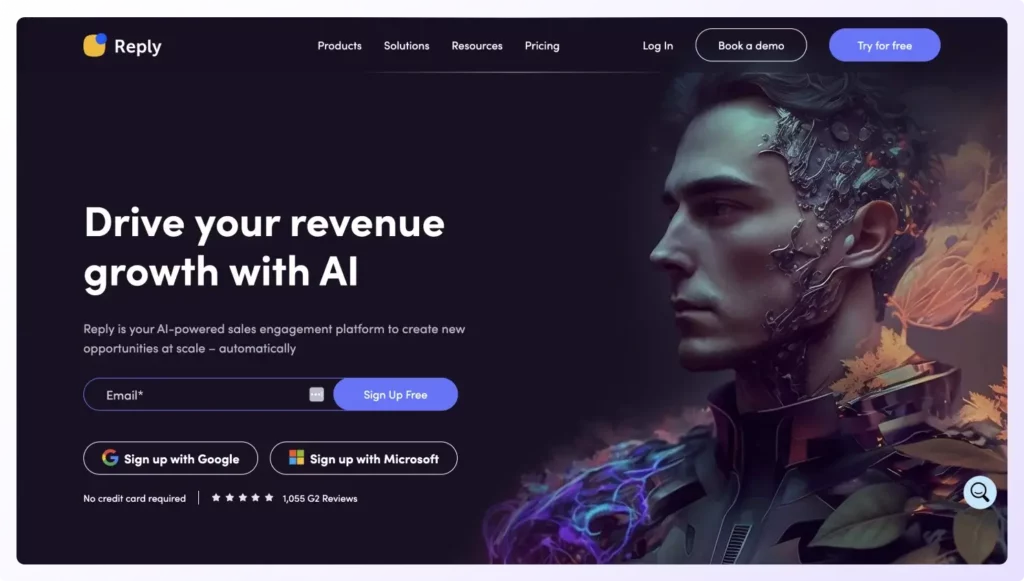
Pros of Reply.io
- Strong multi-channel sequencing. Reply lets you engage with your prospects through multiple channels like email, calls, LinkedIn, WhatsApp, and SMS.
- AI assistance to write emails. Its Jason.ai tool writes emails from scratch and follow-ups based on previous emails, saving reps from the cumbersome task of writing emails.
- Tech stack consolidation. Reply is a well-rounded sales engagement platform that helps you perform almost all sales tasks from this software instead of investing in individual tools for specific tasks.
Cons of Reply.io
- No intent-based playbook approach. Reply doesn't offer the option to tailor your follow-ups based on the prospect's buying intent.
- No way to drive goal-driven outreach. Reply doesn't support setting input goals an SDR needs to achieve to hit the revenue targets like the number of prospects contacted, sales activities performed, and the number of meetings booked.
- Basic dialing capabilities. The tool offers basic dialing capabilities like click-to-call and VoIP calling. Advanced features like parallel dialing, which allows you to call multiple numbers simultaneously, are missing.
- Basic CRM integrations. Reply lacks deep CRM integration features like deal stage automation to automatically add prospects to appropriate cadences depending on the deal stage they enter.
- No intent detector. The platform lacks the capability to score your prospects based on intent signals like email opens or clicks, which helps you identify and prioritize your hottest prospects.
Reply.io Pricing
- Free plan: $0
- Starter plan: $60/user/month.
- Professional plan: $90/user/month.
- Custom plan: Customized plans available.
Learn more about the features and capabilities of Reply.io here.
Mailshake Alternative #6: Outreach.io
Outreach is a sales engagement platform that automates your prospecting workflow and enables you to have personalized conversations with prospects at every stage of their buying journey.
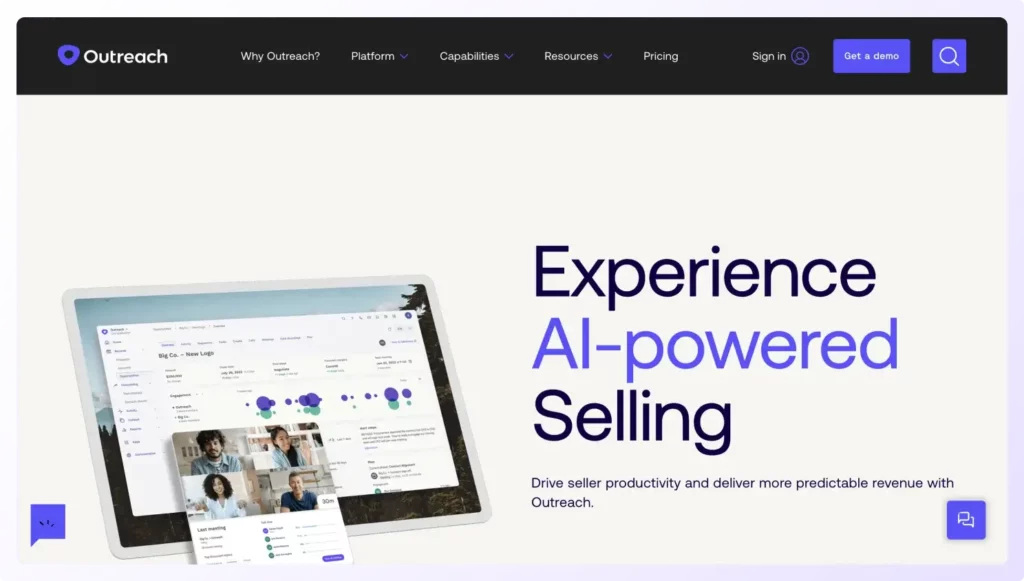
In addition to sales engagement, the platform also provides revenue intelligence and revenue operations functionalities.
Pros of Outreach.io
- Designed for enterprise sales teams. Outreach’s sophisticated capabilities that cover the entire sales cycle, like deal forecasting and pipeline management, are best suited for enterprise organizations.
- Advanced automation capabilities. Outreach lets sales teams automate a large portion of their sales processes, including automated follow-up sequences, auto-pausing sequences for OOO prospects, and auto-syncing of prospect data with CRM.
- AI-driven analytics. Sales teams can track their deals better through Outreach’s AI-powered analytics like deal health score, prospect sentiment analysis, automated speech recognition, and deal forecast simulation.
- Strong integrations. Outreach comes with seamless bi-directional sync with 3 CRMs: Salesforce, HubSpot, and Microsoft Dynamics 365 Sales.
Cons of Outreach.io
- Lack of transparent pricing and free trials. Outreach does not display the pricing for its different tiers on its pricing page and doesn't provide free trials either.
- Steep learning curve. With its umpteen integrations, functionalities, and complex analytics reports, even experienced reps would face a steep learning curve when they begin to use Outreach.
- Less-than-ideal customer support. Several customers have expressed dissatisfaction with Outreach’s customer support and responsiveness in addressing queries. On top of this, support isn’t free of cost.
- Paid onboarding and implementation. Outreach charges the customer for onboarding implementation, which could be a deal-breaker for growing sales teams looking to cut down on spending.
- Lacks outbound goal setting. Despite its wide range of features, Outreach doesn’t allow sales teams to set and track specific outbound goals on a daily basis to achieve overall targets.
- No in-built prospect data curation. Within its platform, Outreach doesn’t enable you to source accurate email and phone data for your ideal buyers.
- Integrates with only limited CRMs. The platform integrates well with Salesforce, HubSpot, and Microsoft Dynamics 365 Sales, and not with other CRMs popular in the market.
- No parallel dialer. Outreach’s Dialer doesn’t let sales reps dial more than one number at a time, which could be disadvantageous for high-performance sales teams that depend heavily on outbound calls.
Outreach.io Pricing
Outreach.io does not have transparent pricing. So, you have to contact their sales team to request pricing for different tiers.
Learn more about the features and capabilities of Outreach.io here.
Mailshake Alternative #7: Apollo.io
Apollo is a data intelligence and sales engagement platform that helps sales teams to discover customers, scale outbound activity, improve existing workflows through analytics, and automate sales processes.
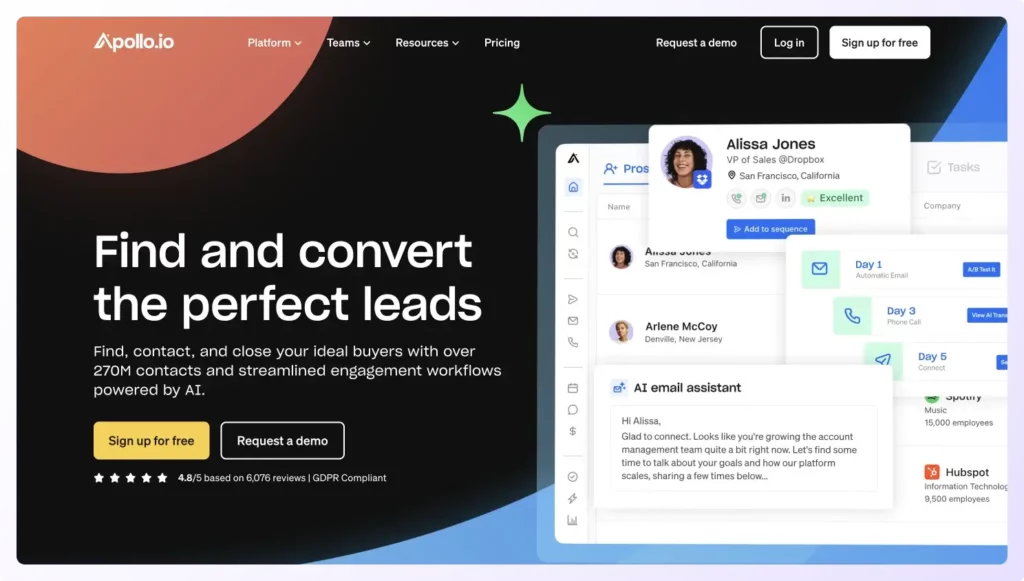
Pros of Apollo.io
- No email send limit. Apollo.io doesn't restrict your email sends, giving you the flexibility to reach out to as many prospects as you need.
- Competitive pricing. Although Apollo has limited features available for the lower pricing plans, Apollo.io is said to be offering competitive pricing plans, catering to a larger audience.
- Resourceful email database. Apollo.io provides access to a substantial database of over 270 million records of emails, enhancing your prospecting capabilities.
Cons of Apollo.io
- Security. Apollo.io's terms state that they will have access to all the prospect contact data you upload to enhance their datasets and they can sell it to other customers in a cyclical data-selling model, which can spark privacy concerns.
- Limited customer support. Reports of less-than-ideal experiences with Apollo’s customer support have been raised by a huge number of Apollo users.
- Underdeveloped onboarding. Apollo.io’s lack of structured onboarding processes can significantly hinder users' ability to swiftly adapt to the platform.
- Playbooks. Users are limited to pre-existing automation templates and may not create custom triggers, reducing customization options.
- No parallel dialer. Apollo.io's standard dialer, while functional, lacks the advanced capabilities of a parallel dialer, which hinders the ability to engage with prospects at scale.
- Non-intuitive reports. Apollo.io's reporting system, while functional, may not fully meet some users' preferences for intuitiveness. This could lead to occasional challenges in extracting actionable insights from the data.
Apollo.io Pricing
- Free: $0.
- Basic: $39/seat/month (annual billing) and $49/seat/month (monthly billing).
- Professional: $79/seat/month (annual billing) and $99/seat/month (monthly billing).
- Organization (for minimum of 5 users): $79/seat/month (annual billing only).
Learn more about the features and capabilities of Apollo.io here.
Mailshake Alternative #8: Salesloft
Salesloft is a cloud-based sales engagement platform that enables sales teams to automate their workflows and connect with prospects more effectively, helping teams to accelerate their sales cycles and drive more revenue.
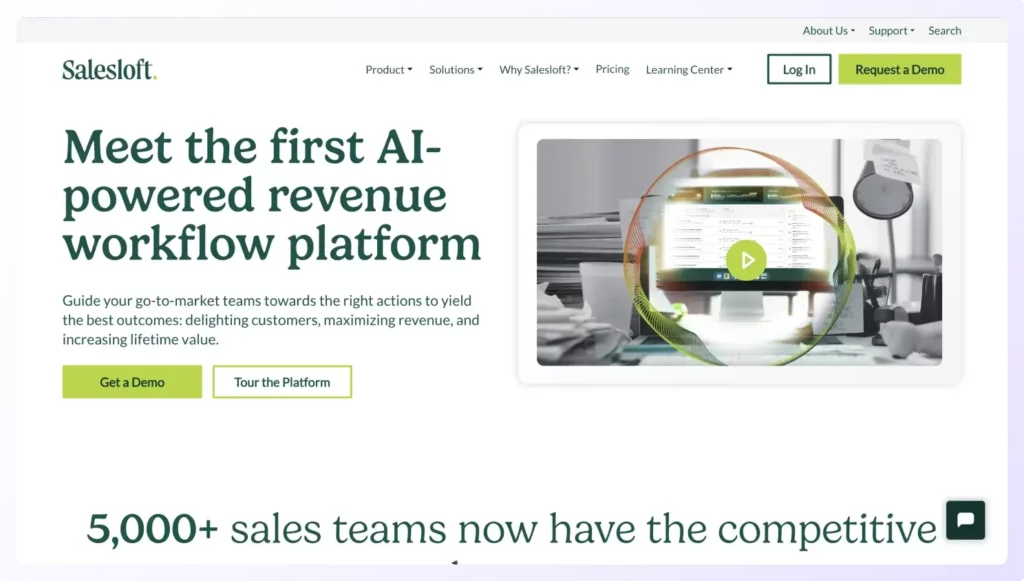
Pros of Salesloft
- Well-suited for enterprise companies. Salesloft’s array of features such as Opportunity Management and Revenue Management, in addition to its pricing, makes it tailor made to cater to larger sales teams.
- Advanced email sequence capabilities. Salesloft equips you with AI-powered email sequence capabilities such as email engagement tracking and real-time analytics.
- Multiple templates. Salesloft equips you with a variety of templates to choose from or even create your customized templates.
- Cadences. Cadences in Salesloft simplifies the process of organizing your prospects and customers and engaging with them.
- AI-driven analytics. Salesloft Analytics provides your team's analytics reports and also enables you to create customized reports with the multiple metrics available.
- Hot Leads. Salesloft’s Hot Leads functionality notifies users of their most highly engaged prospects so that they can prioritize one-to-one engagement efforts.
Cons of Salesloft
- Interface inefficiency. Salesloft's interface, while functional, has been described by a portion of users as somewhat less efficient than they would prefer.
- Reporting complexity. The reporting features in Salesloft have been critiqued for their complexity, making it challenging for users to extract actionable insights from their data.
- Less-than-ideal dialer. While Salesloft's dialer functionality serves its purpose, it’s been perceived by some users as difficult to use, posing a potential challenge for sales reps.
- Email cadencing navigation concerns. Users have raised concerns about the perceived excess of clicks required to perform the email cadencing process.
- Lack of transparency in pricing. Salesloft does not have transparent pricing, nor do they offer free trials.
- Customer support shortfalls. Reports of less-than-ideal experiences with Salesloft's customer support have been raised by several Salesloft users.
- Learning curve and training challenges. Users have reported that adapting to Salesloft’s platform requires a considerable amount of time and effort.
Salesloft Pricing
Salesloft does not offer a transparent pricing page. So, you’ll have to book a demo with them to find out the pricing.
Learn more about the features and capabilities of Salesloft here.
Mailshake Alternative #9: HubSpot Sequences
HubSpot Sequences is a comprehensive sales automation platform designed to streamline your outreach efforts.
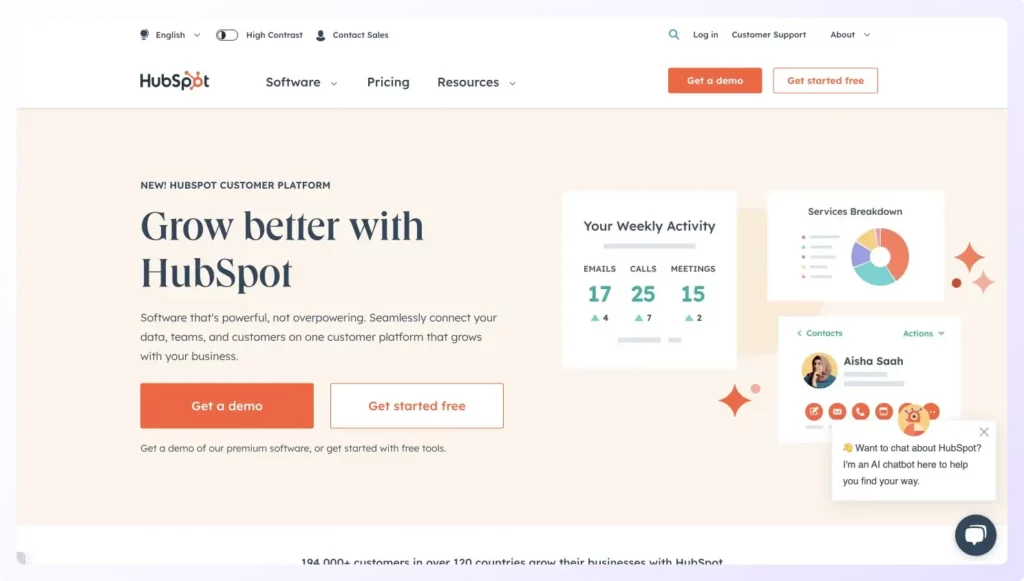
Whether you're aiming to automate follow-ups, personalize sales emails, or conduct A/B tests, HubSpot Sequences offers a suite of features to enhance your sales workflow.
Pros of HubSpot Sequences
- Best for individuals and small teams. Tailored to meet the requirements of individuals and small teams, HubSpot Sequences offers a scalable solution for growing businesses.
- Automated follow-up. HubSpot Sequences empowers you to automate your follow-up process, ensuring that your prospects receive timely and personalized communication.
- Integrations. HubSpot Sequences seamlessly integrates with various platforms, enhancing its compatibility with your existing tech stack.
- Neat UI. The user interface of HubSpot Sequences is designed for simplicity and clarity, ensuring a seamless user experience.
- User-friendly. HubSpot Sequences caters to users of all experience levels, providing an intuitive platform for effective sales automation.
- Free trial availability. Explore the capabilities of HubSpot Sequences with a free trial, allowing you to assess its suitability for your sales needs.
Cons of HubSpot Sequences
- No sales dialer. HubSpot Sequences, unfortunately, lacks a built-in dialer, posing a challenge for sales teams heavily reliant on efficient calling activities.
- Non-intuitive reporting. Extracting actionable insights from the data may require a steeper learning curve, potentially delaying data-driven decisions for sales teams.
- Limited scope for advanced automation. Some users may find HubSpot Sequences to be on the more basic end of the spectrum regarding features.
- Lack of focus on customer support. Reports suggest that HubSpot Sequences may not provide the level of customer support expected by users.
- No behavior-based workflows. Users looking to tailor their outreach strategies based on specific customer interactions and responses may find this limitation restrictive.
- Rigid sales sequences. The platform offers less flexibility in terms of designing and customizing sales sequences.
HubSpot Sequences Pricing
HubSpot Sequences offers 4 pricing tiers:
- Free: $0.
- Starter: $18 per month (billed annually) and $20 per month (billed monthly).
- Professional: $800 per month (billed annually) and $890 per month (billed monthly).
- Enterprise: $3,600 per month (billed annually).
Learn more about the features and capabilities of HubSpot Sequences here.
Mailshake Alternative #10: Lemlist
Lemlist is an email outreach and sales engagement platform that gives you the ability to start more conversations with your prospects, communicate across multiple channels, and build win-win relationships with them.
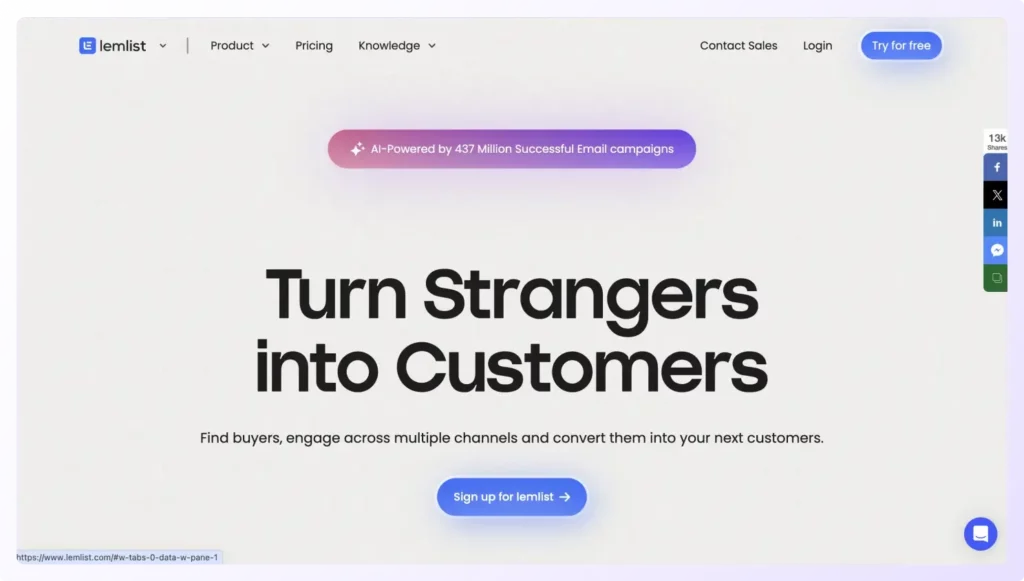
Pros of Lemlist
- Add-on email warmup service. Lemwarm is a specialized email deliverability add-on service that allows you to help you improve and maintain a high sender score while executing email outreach at scale.
- Wide integrations. Lemlist integrates with about 34 tools in the categories of CRM, Enrichment and Workload.
- Multiple sending accounts. Lemlist allows you to use multiple sending accounts to achieve a higher number of emails landing in your prospect’s inbox.
- Automated API steps. As part of the multi-channel messaging approach, you can add custom automated steps like physical mailing and LinkedIn vocals.
- Website variables. Build personalized landing pages just for your leads where you can embed your calendar, include assets or calls to action.
Cons of Lemlist
- Hard-to-navigate UI. Some users have encountered challenges in navigating the platform smoothly and optimizing their workflow.
- Lack of native dialer. Lemlist lacks a native dialer, and uses Aircall for call synchronization. This limitation means that users can only create call tasks within Lemlist but cannot execute them directly from the platform.
- Poor customer support. Reports of less-than-ideal experiences with Lemlist’s customer support have been raised by several Lemlist users.
- Unable to review emails once drafted. Users have reported that Lemlist doesn’t allow users to review or edit the emails once they have been drafted.
- Inefficient onboarding. Users have reported that the onboarding and the implementation procedures followed by Lemlist is less than ideal.
Lemlist Pricing
- Standard: $59/seat/month (monthly) and $50/seat/month (yearly).
- Pro: $99/seat/month (monthly) and $83/seat/month (yearly).
- Enterprise (teams with 10+ reps): Price available upon request.
Learn more about the features and capabilities of Lemlist here.
So, Which Is the Best Mailshake Alternative?
Given Mailshake’s drawbacks, you’d want to consider an alternative tool that comes with powerful dialing capabilities, lets you have a goal-based and intent-driven outreach, deeply integrates with multiple CRMs, provides advanced email personalization, and comes with free trials.
Keeping these in mind, it’s clear that Klenty is the best Mailshake alternative.
- Klenty’s Sales Dialer enables parallel dialing, where you can place up to 5 calls simultaneously, all in one click to help you place 5x more calls.
- For email personalization, Liquid Templates uses dynamic formulas to change the content of your emails based on when the prospect receives and opens the email. Kai, Klenty’s AI Writer, scans the prospect’s website and LinkedIn profile and picks out ‘personalization points’ for your emails.
- Cadence Playbooks helps you detect intent in prospects based on where they are in their buying journey, establish the right next steps for every prospect, and execute precisely those activities which take each prospect towards a meeting. No more blind follow-ups.
- Goals feature lets managers set daily, weekly, and monthly targets for the sales team, get them to commit towards targets for activity, prospect coverage and conversion.
- Klenty integrates with 5 CRMs—Salesforce, Microsoft Dynamics 365, Hubspot, Zoho, and Pipedrive. Its tight integration ensures an up-to-date CRM, saves hours per day by eliminating manual activities, and allows you to focus on selling.
- You’ll get a 14-day free trial to explore all of Klenty’s features with a dedicated account manager.
What’s the proof that Klenty’s the best alternative, you ask?
First Due Booked 233% More Meetings Using Klenty.
A cloud-based company that provides an end-to-end suite for fire and EMS agencies, First Due was struggling to standardize their outbound outreach processes.
Once their sales team standardized their outreach using Klenty, the company went from 60 converted meetings to 200 converted meetings in just 9 months. Read the full story of First Due here.
Want to know how you can scale your outreach and book more meetings with Klenty? Schedule a demo now!
